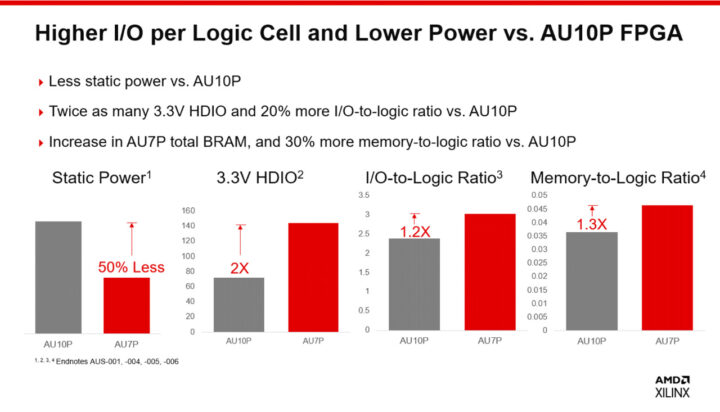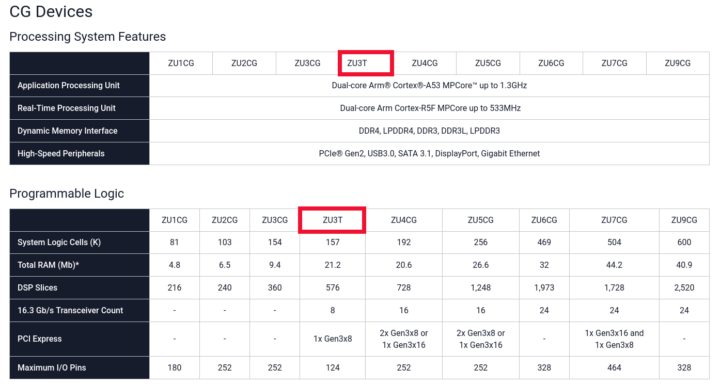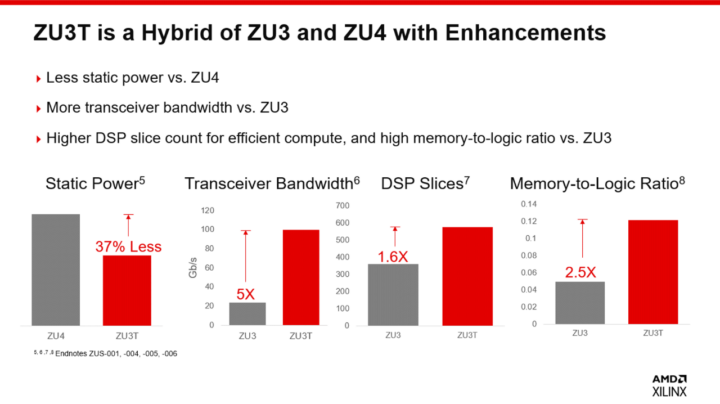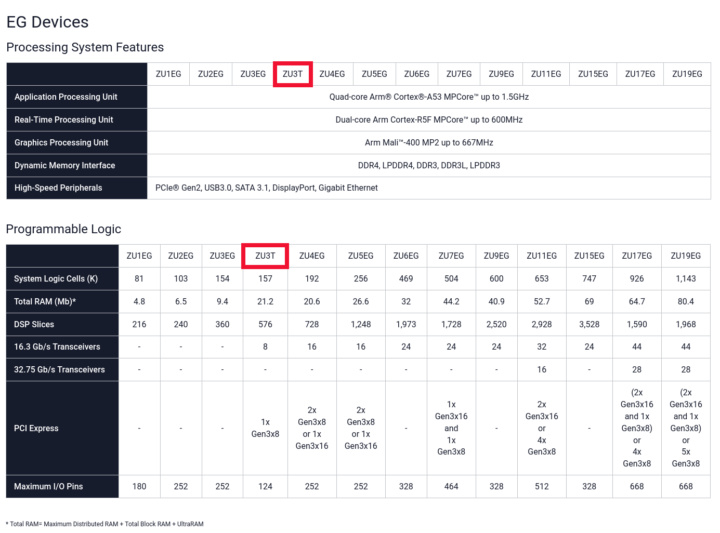AMD has added two new low-cost, low-power members to its UltraScale+ family with the Artix UltraScale+ AU7P FPGA and the Zynq UltraScale+ ZU3T MPSoC.
Both devices are manufactured with the 16nm FinFET process and offer entry points to the transceiver-based UltraScale+ family with features such as high I/O-to-logic density, UltraRAM, DSP, and more.
AMD Artix UltraScale+ AU7P FPGA
The new AU7P FPGA is the smallest from the Artix UltraScale+ family with four 12.5Gbps transceivers, up to 82K system logic cells, 216 DSP slices, 4.9 Mbit RAM, and 248 I/Os. It is offered in a 10.5 x 8.5mm InFO package. The company says the chip provides up to 50% lower static power, 20% more I/O-to-logic ratio, and twice as many 3.3V HDIO compared to the AU10P device.
 The AU7P is designed for space-constrained and/or power-sensitive applications such as medical imaging, machine vision, professional cameras/monitors, and automotive radar/lidar. More details may be found on the product page.
The AU7P is designed for space-constrained and/or power-sensitive applications such as medical imaging, machine vision, professional cameras/monitors, and automotive radar/lidar. More details may be found on the product page.
AMD Zynq UltraScale+ ZU3T MPSoC
The ZU3T is not the smallest Zynq UltraScale+ MPSoC, but the keyword here is “transceiver”, and it is indeed the smallest transceiver-based chip from the UltraScale+ MPSoC family. it is available as a CG device with a dual-core Cortex-A53 CPU, dual-core Cortex-R5F real-time CPU, up to 157K system logic cells, 21.2 Mbit RAM, 576 DSP slices, eight 16.3Gbps or 12.5Gbps transceivers, as well as 1x PCIe Gen 3 x8 interface and up to 124 I/O pins.

The ZU3T can also be found as an EG device with a quad-core Cortex-A53 CPU, dual-core Cortex-R5F real-time CPU, an Arm Mali-400 MP2 GPU, and just like the ZU3T CG SKU up to 157K system logic cells, 21.2 Mbit RAM, 576 DSP slices, eight transceivers, as well as 1x PCIe Gen 3 x8 interface and up to 124 I/O pins.
The ZU3T device is described as a hybrid between the UltraScale+ ZU3 and ZU4 MPSoC. It consumes 37% less static power than the ZU3T, and offers 5 times the transceiver bandwidth of the ZU3 device, together with a higher DSP slice count (1.6x) and memory-to-logic ratio (2.5x).
 AMD says the ZU3T device is suitable for critical networking applications, vision and video processing, smart cities, camera monitors, medical imaging, and automotive infotainment. More details can be found on the product page.
AMD says the ZU3T device is suitable for critical networking applications, vision and video processing, smart cities, camera monitors, medical imaging, and automotive infotainment. More details can be found on the product page.
Additional information may also be found in a blog post on Xilinx’s website.

Jean-Luc started CNX Software in 2010 as a part-time endeavor, before quitting his job as a software engineering manager, and starting to write daily news, and reviews full time later in 2011.
Support CNX Software! Donate via cryptocurrencies, become a Patron on Patreon, or purchase goods on Amazon or Aliexpress. We also use affiliate links in articles to earn commissions if you make a purchase after clicking on those links.






AMD and low cost in the same sentence does not sound right at all, I was curious to see it isn’t something appealing to the regular user xD.
Try harder AMD 🙂